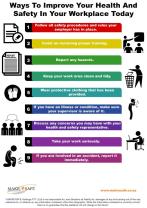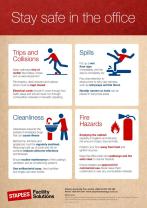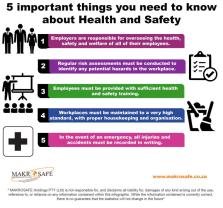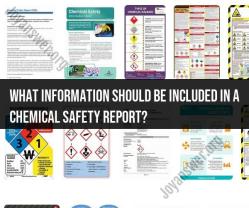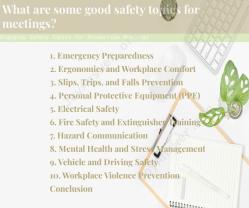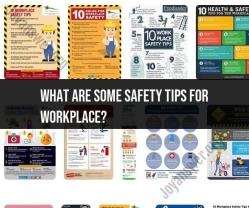How to conduct a tool box talk?
A toolbox talk, also known as a safety meeting or tailgate meeting, is a brief, focused discussion held regularly within a workplace to address specific safety issues and promote a culture of safety among employees. Here's a guide to effectively conduct a toolbox talk:
Choose Relevant Topics:
- Select topics that are relevant to the work being performed and address current safety concerns.
- Consider recent incidents, near misses, or changes in procedures when choosing discussion topics.
Schedule Regular Sessions:
- Establish a regular schedule for toolbox talks. Depending on the nature of the work, these talks can be daily, weekly, or monthly.
- Consistency helps reinforce the importance of safety and keeps it at the forefront of employees' minds.
Keep it Short and Focused:
- Toolbox talks should be brief, typically lasting between 5 to 15 minutes.
- Focus on a single topic to maintain the attention of the participants and convey the key safety messages effectively.
Use Engaging Materials:
- Use visual aids, such as diagrams, charts, or videos, to illustrate key points.
- Engaging materials help in conveying information more effectively and enhance the learning experience.
Encourage Participation:
- Toolbox talks should not be one-sided. Encourage active participation from employees.
- Foster an open environment where employees feel comfortable sharing their experiences and insights.
Relate to Real-Life Situations:
- Relate safety topics to real-life situations and experiences.
- Use examples and scenarios that resonate with the work environment to make the discussion more relatable.
Reinforce Positive Behavior:
- Recognize and reinforce positive safety behaviors observed in the workplace.
- Positive reinforcement encourages employees to adhere to safety protocols and sets a standard for safe practices.
Discuss Near Misses and Incidents:
- Use toolbox talks as an opportunity to discuss recent near misses, incidents, or accidents.
- Analyze the root causes and discuss preventive measures to avoid similar occurrences in the future.
Provide Actionable Takeaways:
- Clearly outline actionable steps and measures that employees can take to enhance safety.
- Make the information practical and applicable to the daily tasks of the workforce.
Document and Record:
- Keep records of toolbox talks, including topics discussed, date, and attendees.
- Documentation helps track the progress of safety initiatives and ensures that all relevant topics are covered over time.
Follow-Up and Feedback:
- Follow up on previous toolbox talks to reinforce key messages and assess the effectiveness of implemented safety measures.
- Solicit feedback from employees to continually improve the toolbox talk process.
Evaluate Impact:
- Assess the impact of toolbox talks on workplace safety and adjust the content and format as needed.
- Use leading indicators, such as a reduction in incidents or improved safety compliance, to measure success.
By following these guidelines, organizations can conduct effective toolbox talks that contribute to a safer work environment and foster a culture of safety among employees.
Toolbox Talks for a Safer Workplace
1. Conducting a Toolbox Talk:
- Choose a relevant topic: Align the talk with current work activities, recent incidents, or upcoming changes. Consider common hazards or near misses.
- Plan & prepare: Research the topic, gather resources (videos, images, data), and prepare a concise outline. Keep it informative but under 15 minutes.
- Find the right time & place: Conduct the talk before work starts, during breaks, or at shift changes. Choose a quiet, distraction-free area.
- Engage your audience: Ask questions, encourage participation, and ensure everyone understands the information. Use relatable examples and humor.
- Promote discussion: Allow employees to share experiences, concerns, and suggestions for improvement. Open communication is key.
- Conclude with action: Summarize key points, reiterate safe practices, and encourage further conversation or reporting of safety issues.
2. Fostering a Safety Culture:
- Go beyond compliance: Make safety a core value, not just a regulatory requirement. Promote it through leadership commitment, company policies, and training programs.
- Regularly conduct talks: Incorporate toolbox talks into the routine, not just in response to incidents. Consistent reminders keep safety top-of-mind.
- Variety is key: Use different formats, activities, and visuals to keep talks engaging and relevant. Invite guest speakers or experts to share experiences.
- Recognize and reward safe behavior: Publicly acknowledge employees who demonstrate safe practices or contribute to safety improvements.
- Lead by example: Managers and supervisors must also follow safety rules and procedures, setting a positive tone for the entire team.
3. Best Practices by Industry:
- Construction: Focus on fall hazards, PPE usage, working with heavy machinery, and electrical safety. Consider using real-world examples and demonstrations.
- Manufacturing: Highlight machine safety, proper lifting techniques, chemical handling procedures, and ergonomics. Employ visuals and diagrams to explain complex concepts.
- Healthcare: Emphasize infection control, bloodborne pathogen awareness, safe medication handling, and patient safety protocols. Role-playing scenarios can be effective.
- Office work: Discuss ergonomics, mental health awareness, fire safety, and preventing slip-and-fall accidents. Encourage breaks and stretching exercises.
Remember: Toolbox talks are just one piece of the safety puzzle. Combine them with comprehensive training programs, hazard assessments, and ongoing communication to create a truly safe and healthy work environment.


